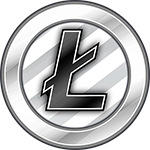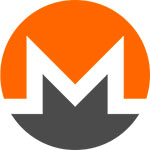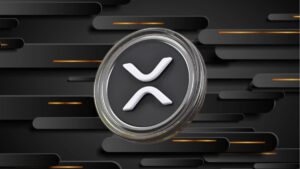What are cryptocurrencies?
Cryptocurrencies are a virtual currency that can be used to exchange goods and services as we could do with any fiduciary currency. The main difference between cryptocurrency and fiat money, is that they are completely decentralized and are not controlled by banks, governments or centralized institutions.
The first to appear was Bitcoin, created in 2009 by Satoshi Nakamoto – an alias that hides the true creator. Until this day no one knows who hides behind this name, whether a man, a woman, a group of people or companies, it is one of the great mysteries behind the first cryptocurrency.
The financial markets are also changing thanks to the cryptocurrencies and are gradually accepting them. Faster and safer transactions that have modern technology can do things such as avoiding counterfeits or executing contracts without the confidence of the parties using automatic resolution, these are only part of the improvements that these virtual currencies and their technology have brought.

What are the benefits and risks of cryptocurrencies?
Cryptocurrencies are a relatively new market and, as everything that is new, has its pros and cons, which we will indicate below.
Advantages of investing in cryptocurrencies
- Volatility: One of the characteristics that surrounds most cryptocurrencies is their high volatility, it is not uncommon to see how they can increase or reduce their value by 50% in hours or days, this volatility combined with a good strategy can offer positive results .
- Global Vision: Investing in cryptocurrencies is like investing in the stock market, we must be sure where we are positioning our capital, behind every cryptocurrency there is a project, and it is that project that must be analyzed to determine if the investment should be made.
- Decentralization: Once you enter the world of cryptocurrencies, decentralization is a word you often hear because it is one of the bases of cryptocurrencies, since most cryptocurrencies are not controlled by any state , bank, financial institution or centralized company, with the advantages that this implies.
- Transparency: Transactions in Bitcoin are completely transparent, anyone can see how much money is in a wallet or where they have sent their transactions but what we will not see are the names of the owners, for this reason it is considered pseudo-anonymous.
- Broad acceptance: More and more companies, small businesses or governments are accepting cryptocurrencies as a form of payment, which makes it easier to use as a currency.
What are the main risks of investing in cryptocurrencies?
- Losses: Losses in cryptocurrency are associated with volatility and inexperience of the user, whenever an investment is made it should be under the premise. “Do not invest what you are not willing to lose”.
- Deceptions: Cryptocurrencies, like any other valuable object, are not excluded of people who want to take advantage of the opportunity. That is why fraudulent projects or companies arise which want to deceive the investor by offering a product far from reality with the sole purpose of committing a fraud, a big marketing campaign does not make a cryptocurrency real.
- Regulatory changes: Every time there are more obstacles that some governments, tax collectors and other instruments of the state put on the investors of cryptocurrencies, if something generates money they want their part, the advantage is that the blockchain technology was born in response to the excesses of these institutions and they are difficult to control.
What are the most interesting cryptocurrencies to invest currently and why?
Investing in a cryptocurrency is to invest in a project, and one has to know very well what is behind each of them. For that reason we will proceed to analyze the basis so that you understand better what projects are behind some of the currencies with more market capitalization.
Behind every cryptocurrency there is a Max Supply, which is the maximum of coins that have been created or can be mined. This makes them have a limited and immutable number and is one of its main advantages. Cryptocurrencies that can not be created eternally increases their value, since for example it is not the same to go buy a car when there is an unlimited production compared to buying a car when there are 21 million and no longer going to create more – the shortage will make them more valuable.
Ripple (XRP):
Also known as the banks cryptocurrency, it was created in 2004 by Ryan Fugger and is used by BBVA, Banco Santander or American Express among others. It is a centralized currency that breaks the essence of Bitcoin (decentralization) and is used as virtual payment in real time, since it allows sending and receiving money in 5 to 10 seconds. (Max Supply 99.992.405.149 XRP).
Main Characteristics of Ripple:
- It is based on Blockchain Technology.
- Low costs and transaction speeds.
- Use of ripple technology through a consensus algorithm.
- It is not 100% decentralized. Designed for financial entities.
- No scalability problems
Litecoin (LTC):

Main Characteristics of Litecoin:
- Scrypt used as algorithm.
- Processing of blocks every 150 seconds.
- Compatibility with Cold Wallets Trezor and Ledger Nano.
Ether (ETH):

Main Characteristics of Ether:
- Intelligent multifirm custody.
- Cloud Computing.
- Possibility of creating Smart Contracts.
- Uses EtHash Algorithm.
- Turing Complete programming language.
- Proof of Work (Pow) work form
- Transaction value depends on GAS.
- Number of decimals 18.
- Block processing every 16 seconds.
Bitcoin (BTC):

Main Characteristics of Bitcoin:
- SHA 256 used as Algorithm.
- Proof of Work (Pow) work form
- Compatibility with Cold Wallets Trezor and Ledger Nano
- C ++ programming language
- Block processing every 10 minutes.
Monero (XMR):

Main Characteristics of Monero:
- Uses CryptoNight Algorithm.
- Proof of Work (Pow) work form
- Dynamic scalability
- Uses multiple keys
- Confidential transactions.
- Signature in rings.
Dash (DASH):

Main Characteristics of DASH:
- Masternode reward program – Costs and payments.
- Deterministic order. Tracking of coinsJoin for amounts.
- Passive anonymization of funds and chaining.
- Quorum without trust.
- Master node blinding through the relay system.
- Instant transactions through InstantSend.
- X11 used as algorithm.
Neo (NEO):

Main Characteristics of NEO:
- Smart contract system: NeoContract:
NeoVM – Universal blockchain Virtual machine.
InteropService – Interoperable services.
DevPack – Compiler and IDE complement.
- Inter-string interoperability agreement: NeoX
- Distributed storage protocol: NeoFS
- Mechanism of anti-quantum cryptography: NeoQS
- Consensus Mechanism: dBFT
Cardano (ADA):

Main Characteristics of Cardano:
- Greater financial inclusion.
- Compliance with the expectations of the regulatory governments.
- Explores the social elements of commerce.
- Allows the creation of new tokens and DApps.
- Separates accounting and computing in different layers.
- Development of a decentralized financing mechanism for future work.
Iota / Miota:

Main characteristics of IOTA:
- Highly Scalable
- Low requirement of resources.
- Transactions at rate zero (no fee).
- Secure data transfer
- Decentralization: IOTA does not have miners, it participates actively in the consensus.
- IOTA is more decentralized than any other Blockchain.
- Quantum immunity: IOTA used a trinary hash function called Curl, which is quantum immune (Winternitz signatures).
Nem (XEM):

Main Characteristics of NEM (XEM):
- Multifirm Transactions (Catapult adds Nested and IOT Compatibility)
- Functional Nodes and Rewards (Decentralization)
- Light Functional Client (Nanowallet)
- Friendly Human Addresses (Namespaces)
- Functional High Speed Network
- Union Center Incorporated Nanowallet
- Paper Wallet Functionality
- Co-Working / Research Spaces in Kuala Lumpur, Melbourne, Lithuania
- Trezor Wallet Compatibility
- Debit Card Compatibility (Pundi X)
- Smart Contract Instruments and Testnet
- Societies and programmed research (40+, Global and In progress)
Community Events and Meetups (100+, Global and In Progress)
Do you think cryptocurrencies are the future? Do you think it is a bubble that will explode like dotcoms? Have you invested or are you thinking about investing in them? Or did you have any doubts while reading the article? Please comment or contact us and we will be pleased to help you.











